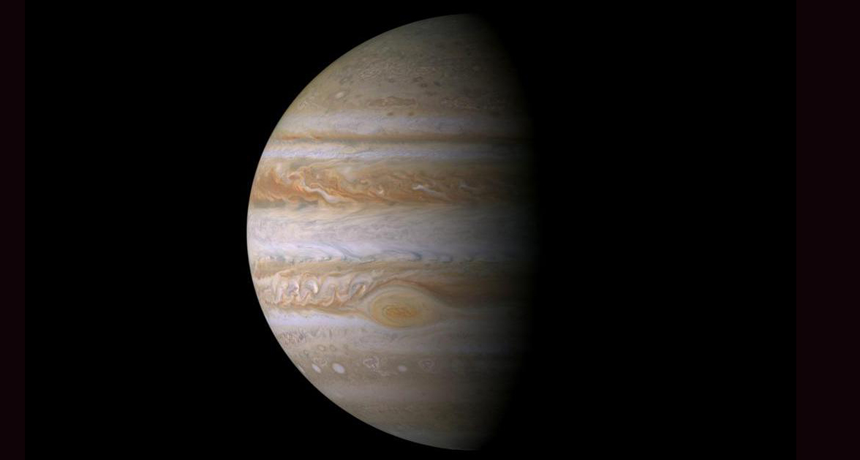aerial Of or taking place in the air.
astronomy The area of science that deals with celestial objects, space and the physical universe. People who work in this field are called astronomers.
atmosphere The envelope of gases surrounding Earth or another planet.
chemistry The field of science that deals with the composition, structure and properties of substances and how they interact with one another. Chemists use this knowledge to study unfamiliar substances, to reproduce large quantities of useful substances or to design and create new and useful substances. (about compounds) The term is used to refer to the recipe of a compound, the way it’s produced or some of its properties.
cloud A mass of airborne water droplets and ice crystals that travel as a plume, usually high in Earth’s atmosphere. Their movement is driven by winds.
dynamic An adjective that signifies something is active, changing or moving. (noun) The change or range of variability seen or measured within something.
Jupiter (in astronomy) The solar system’s largest planet, it has the shortest day length (10 hours). A gas giant, its low density indicates that this planet is composed of light elements, such as hydrogen and helium. This planet also releases more heat than it receives from the sun as gravity compresses its mass (and slowly shrinks the planet).
mean One of several measures of the “average size” of a data set. Most commonly used is the arithmetic mean, obtained by adding the data and dividing by the number of data points.
NASA Short for the National Aeronautics and Space Administration. Created in 1958, this U.S. agency has become a leader in space research and in stimulating public interest in space exploration. It was through NASA that the United States sent people into orbit and ultimately to the moon. It has also sent research craft to study planets and other celestial objects in our solar system.
planet A celestial object that orbits a star, is big enough for gravity to have squashed it into a roundish ball and it must have cleared other objects out of the way in its orbital neighborhood. To accomplish the third feat, it must be big enough to pull neighboring objects into the planet itself or to sling-shot them around the planet and off into outer space. Astronomers of the International Astronomical Union (IAU) created this three-part scientific definition of a planet in August 2006 to determine Pluto’s status. Based on that definition, IAU ruled that Pluto did not qualify. The solar system now includes eight planets: Mercury, Venus, Earth, Mars, Jupiter, Saturn, Uranus and Neptune.
planetary science The science of other planets besides Earth.
radio waves Waves in a part of the electromagnetic spectrum; they are a type that people now use for long-distance communication. Longer than the waves of visible light, radio waves are used to transmit radio and television signals; it is also used in radar.
wave A disturbance or variation that travels through space and matter in a regular, oscillating fashion.

